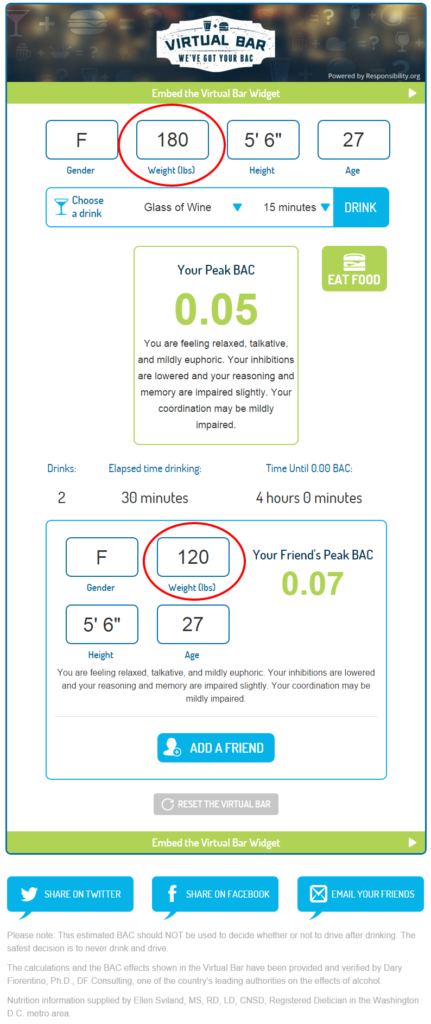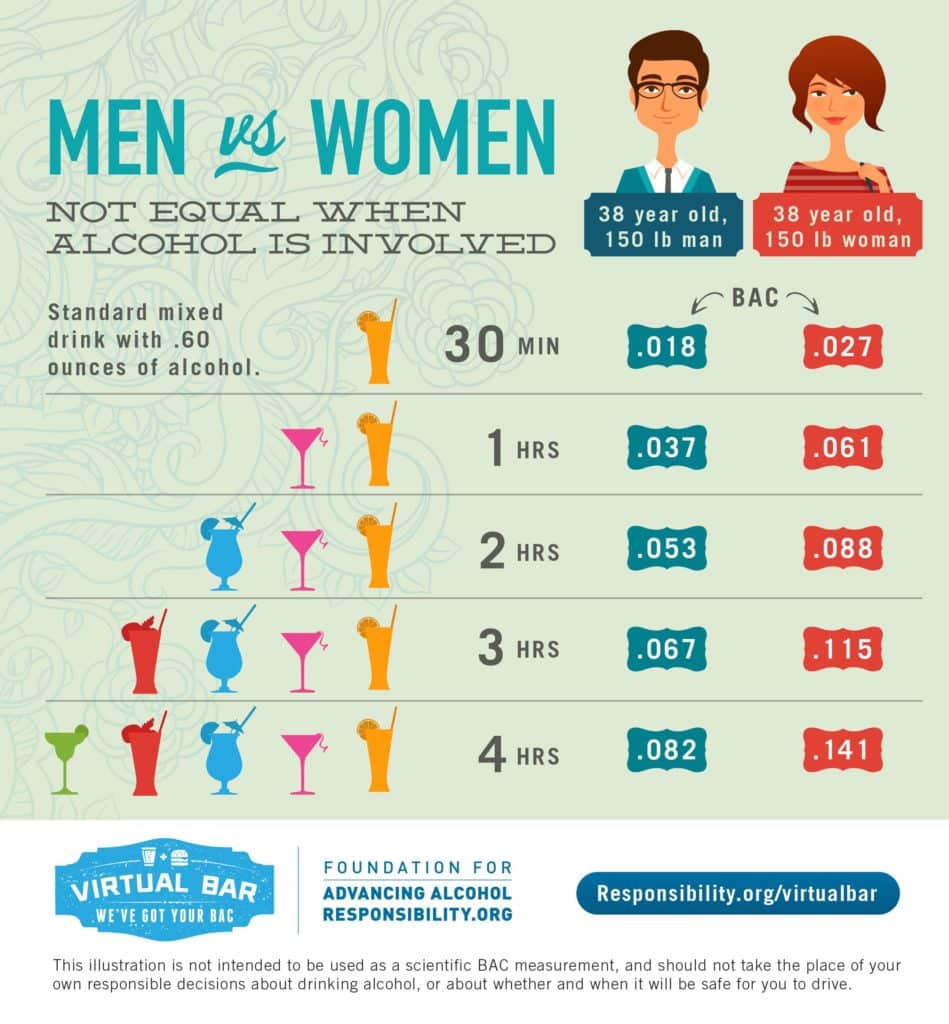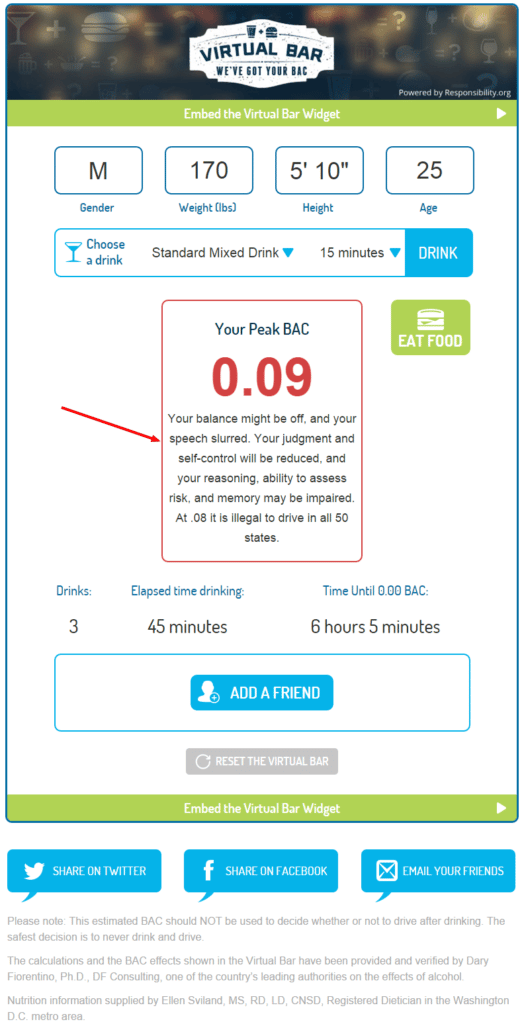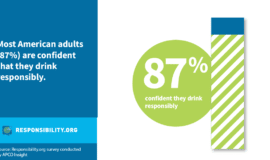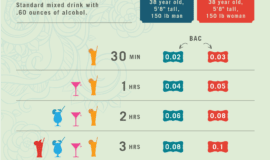Erin Holmes: How alcohol interacts with the body
Most of us are familiar with the term blood alcohol concentration or BAC. What is less known is how BAC climbs and decreases over time. We encourage everyone to head over to our Virtual Bar and become educated about how different factors can affect BAC levels and to also gain understanding of the physical and cognitive effects associated with varying alcohol concentration levels.
But before you head on over (read: scroll down) to the bar, we want to take you back to science class.
- Did you know that an individual’s alcohol concentration level is influenced by a number of factors including gender, weight, quantity of consumption, rate of consumption, food consumption, and rates of alcohol absorption and metabolism?
- Did you know that once you have consumed alcohol you cannot sober up by drinking coffee or water, exercising, eating, or getting fresh air?
Let’s discuss the three important processes that occur once you begin to drink alcohol.
Absorption. This is the process of alcohol being ingested and moving into the bloodstream where it can then be distributed throughout the body. Once alcohol is consumed, it is absorbed through the lining of the stomach. Approximately 20% of ingested alcohol is absorbed through the stomach walls before digestion occurs. The remaining 80% will be absorbed when it leaves the stomach and enters the small intestine.
- Alcohol fact: Drinking on an empty stomach results in rapid absorption. We could go into a spiel about something called a “pyloric valve,” but our goal here is to keep your attention, so we’ll skip to the part in English: Basically, when a person eats a full meal before drinking, the alcohol gets trapped in the stomach with food. This food must be digested, thus increasing the amount of time it would take for the alcohol to be absorbed. Due to the delay in absorption, it will take longer for that person to hit their peak BAC than if they had been drinking on an empty stomach.
Distribution. Once alcohol has been absorbed, it is then distributed through body tissues and organs via the bloodstream. Remember we said that factors such as weight and gender can affect an individual’s BAC? This relates to the distribution process. Alcohol has an affinity for water and, in fact, is completely soluble. An individual’s alcohol concentration is, therefore, proportional to their total body water content. The relative alcohol concentration in any part of the body (e.g., organ) is also related to water content.
- Alcohol fact: Generally speaking, if two people of the same gender drink the same amount of alcohol under the same conditions, the heavier individual will have a lower BAC.
- Alcohol fact: If a man and a woman drink the same amount of alcohol under the same conditions, the woman will have a higher BAC because women have less water in their bodies (55% vs. 68%). Read more about alcohol and gender on Monday.
- Alcohol fact: Brain tissue has a fairly high water content so it receives a substantial share of the distributed alcohol.
Elimination. Immediately after alcohol enters the bloodstream, the process of metabolism occurs as the body attempts to eliminate it. This process which takes place primarily in the liver accounts for 95% of alcohol elimination (excretion and evaporation – e.g., breath, sweat, urine – account for the remainder). The rate at which alcohol is eliminated is typically .015 to .018 g/100mL per hour. For example, it would take approximately 10 hours to go back down to a BAC of .00 if your maximum BAC was .15.
The alcohol concentration curve
The above processes (absorption, distribution, and elimination) result in an alcohol concentration curve (pictured below).
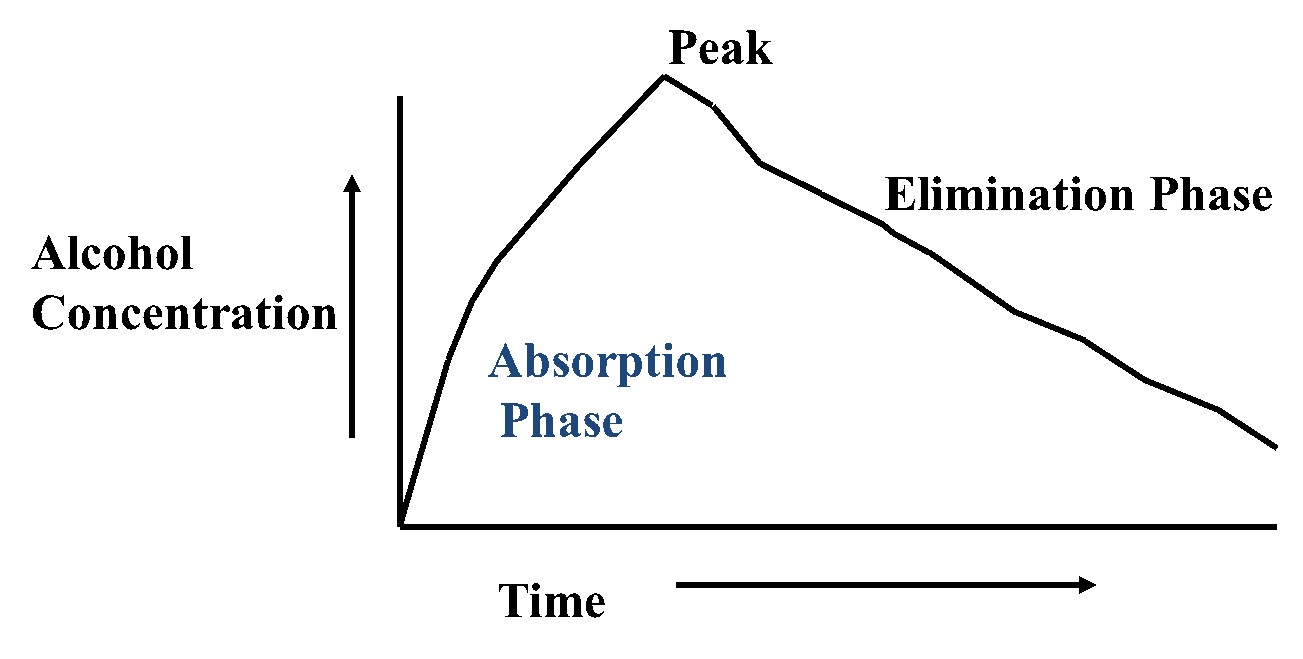
The process of alcohol metabolism begins when alcohol is absorbed in the body and continues until it is eliminated.
- A person’s alcohol concentration will rise over time if alcohol is absorbed in the body more rapidly than it is being eliminated.
- The ‘peak’ concentration level is typically reached within 30-60 minutes once the person stops drinking.
- If absorption and elimination rates are equal, the alcohol concentration will remain constant and there will be a longer peak phase.
- After absorption has been completed, the alcohol concentration will decrease until the alcohol is completely eliminated from the body.
Now check out the Virtual Bar and test this science in a real-world scenario!

